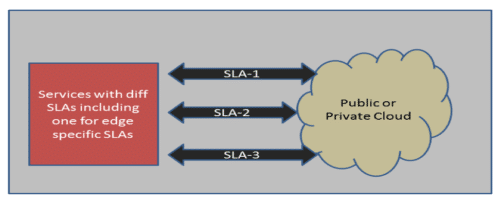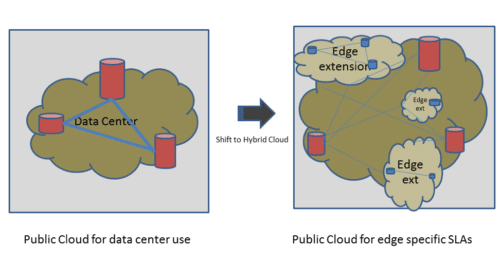Edge Computing is taking a pivotal role in telecom industries. The next generation networks requirements need adherent computing power, at feasibly closest to the end devices, at the front of the network. In fact, such requirements have been attributed to real time or low latency, and that require processing the data at the point, or near the point, where it is being generated and produced.
Edge computing could be addressed through the dedicated or privately held virtualized infrastructures and also bringing clouds for edge specific requirements. There are vendors like VxWorks, RedHat, who have been there to provide virtualized infra for edge computing need (Also to certify software product for cloudification or virtualization). There has been strong interest for cloud providers to capture the edge and they have been active in this space with the mantra of “Hybrid Cloud” that is mix or distributed form of cloud computing with right harmonization and orchestration. We have seen recent M&A in these directions like for example of IBM & VxWorks.
Edge for Cloud providers – Edge Cloud
“Edge”, in rationale terms is something about the hierarchical distribution of certain functionalities in E2E construct with intent of being at front or close to edge. “Edge” disrupts the very nature of cloud services too, as it is something creates a moat for innovation and business. Hybrid cloud brings in not only private cloud but public cloud as well, although edge is attributed to geographical location but while intriguing on it one can very well understand it’s about certain level of SLA and KPIs required for specific application needs.
Concerning that industry looks around hybrid cloud solution and that approach feeds more fuel for edge.

So “edge” disrupts the cloud in sense of not only providing a back office or central office work but distribute the work at different level, end to end, in terms of SLA and KPIs.
The edge, in that sense, could be available at public cloud service providers. As for many of cloud service creations for small players of specific services on cloud, the cloud service providers should provide the required SLAs needed for those specific services. That approach will help to reduce the cost of infra for certain services which are marginal for real time requirements, like telephony based OTT services. This also can help the small players to deploy their services without cost intensive hardware and required management.
But, in turn, it put pressure on cloud service providers to create their infrastructure in the way to address the specific SLA demands. As these SLA demands are generated by specific service providers to perform as per the required KPIs. This could gain a fair extension in terms of cloud service provider’s business portfolios, as per the figure below.

This Going to turn the business form virtualization vendors or OEMs to cloud service providers, and will re-define the term “edge” like cloud –SLA and edge-SLA instead of geographical earmarking, and what remained at access in geographical location point of view is the “fog”.
Fog is about virtualization of end system resources, these end systems are mutually connected through high bandwidth links and form a cluster. This is about one end system can share it scare resources to other in complete transparent way, and make the whole cluster efficient for service demands. Fog systems are the end systems, like WiFi Access point or Base transceiver system in cellular networks, because these are first connection point for end users, and that’s where they can provide a much real time responses.
Fog systems can be better used for in-vehicle systems for autonomous or self-driving applications. Fog systems will be beneficial for in-building solutions like shopping malls etc.
Fog systems may also play important role in 5G technology applications like beam handovers etc.
As the networking business is moving from OEMs to Software vendors and much of networking functions are now developed on software and deployed on commodity servers.
This has given the rise of Virtual network functions (VNF) that provides networking nodes functionalities like routers, firewalls etc. through software and can be run on commodity platforms. Since Cloud provides a datacenter model for back office processing these VNFs can also be deployed to these clouds. Also the virtualization technology helps to manage these cloud infrastructures in optimize and efficient way, for right use of computing resources as per the need and requirement from VNF, and also could be configured on the go. This helps operators to deploy their networking solution in flexible, scalable and cost efficient way.
Saurabh Verma is the Chief Technology Consultant & Founder Fundarc communication (xgnlab)







